ZHCSTV0K November 2001 – December 2023 LP2992
PRODUCTION DATA
- 1
- 1 特性
- 2 应用
- 3 描述
- 4 Pin Configuration and Functions
- 5 Specifications
- 6 Detailed Description
- 7 Application and Implementation
- 8 Power Supply Recommendations
- 9 Layout
- 10Device and Documentation Support
- 11Revision History
- 12Mechanical, Packaging, and Orderable Information
7.2.3 Application Curves
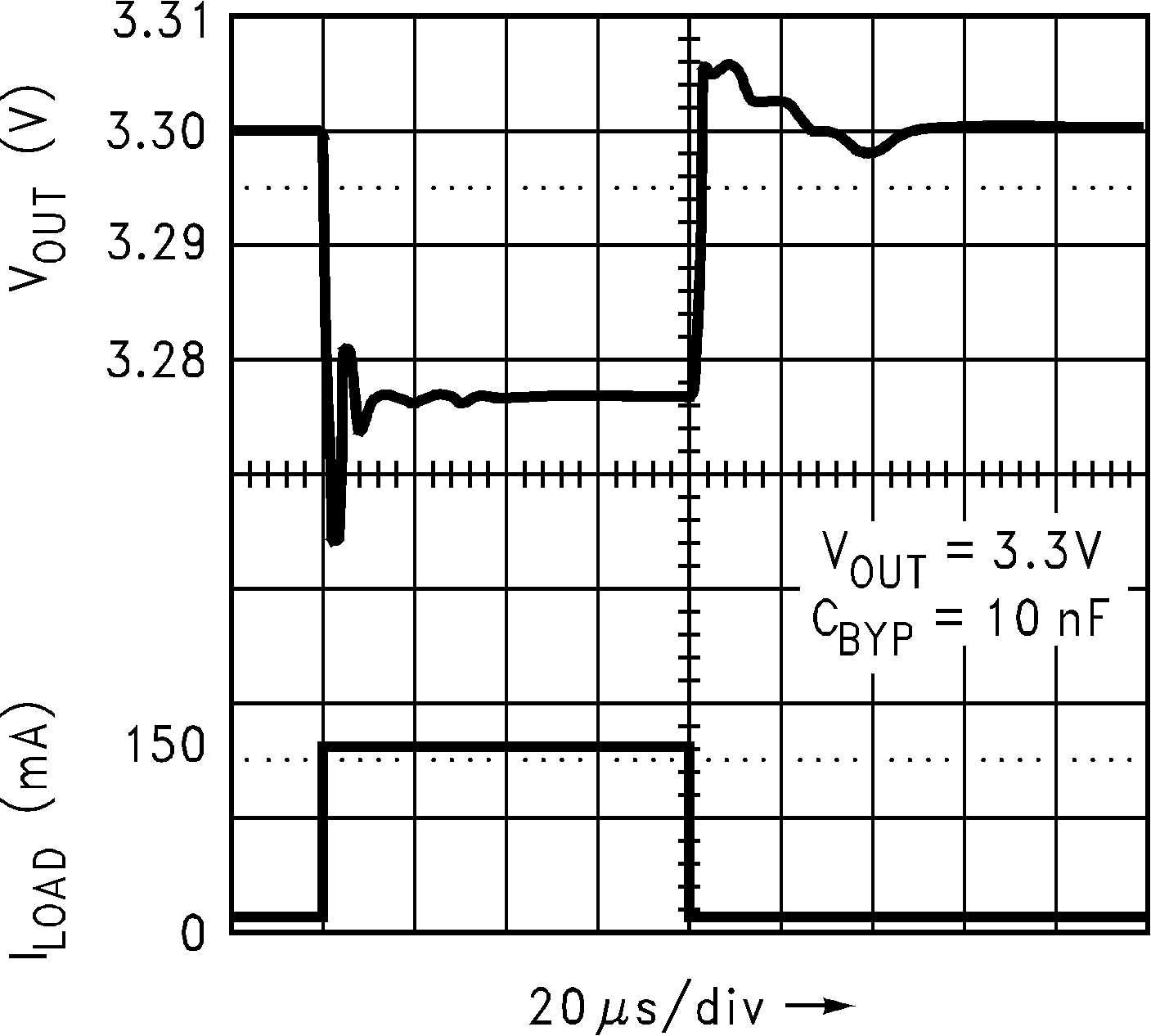
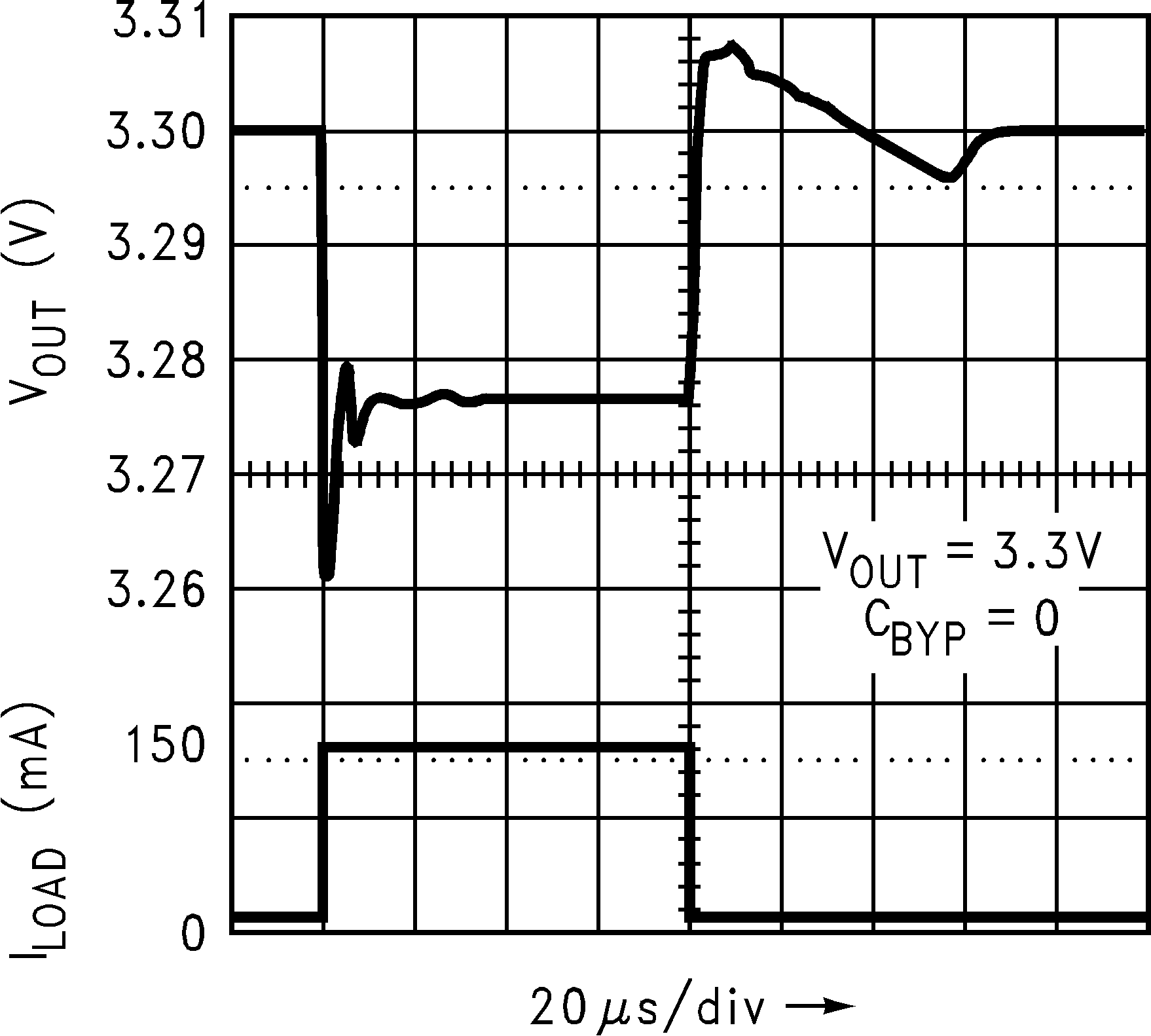
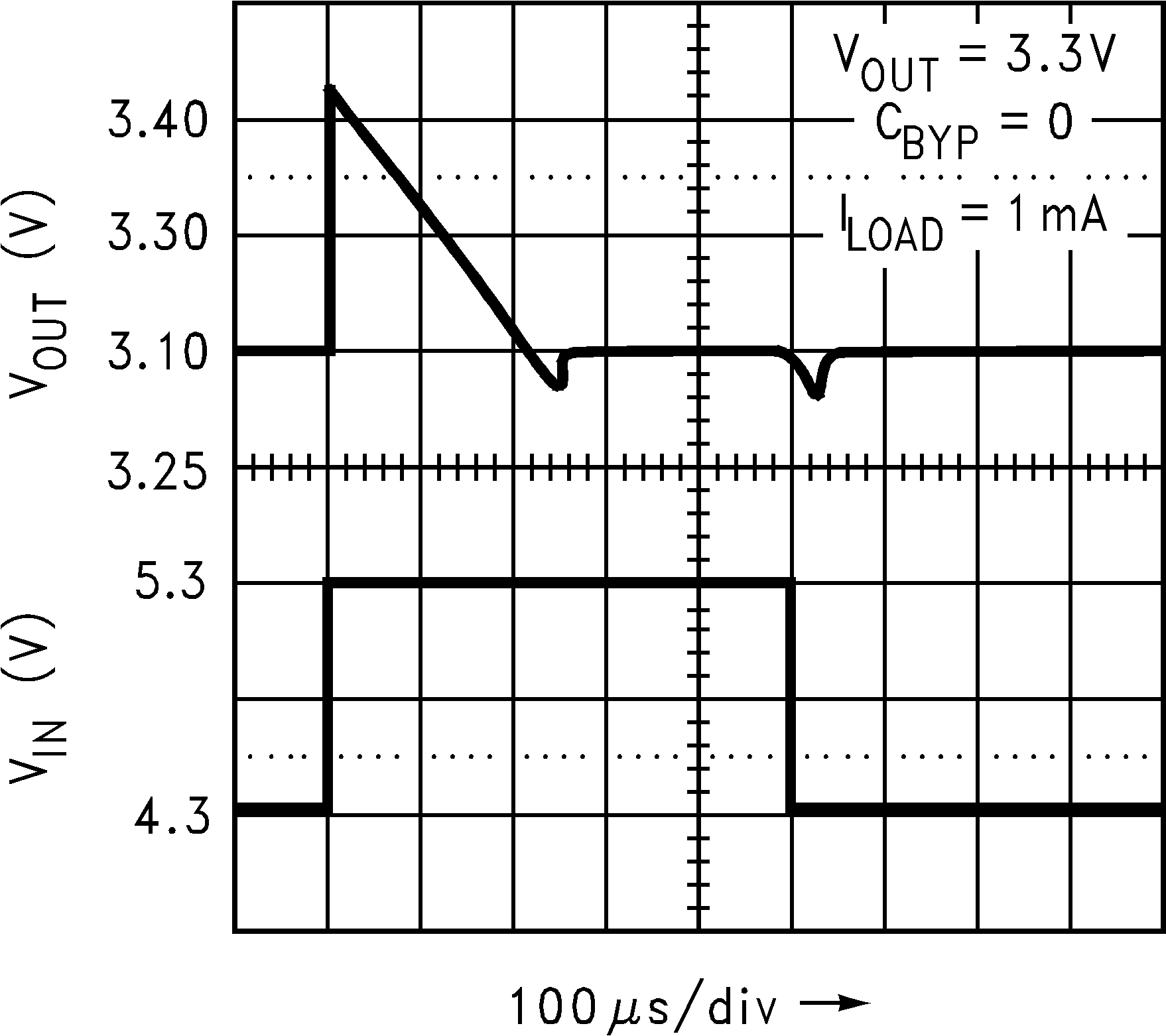
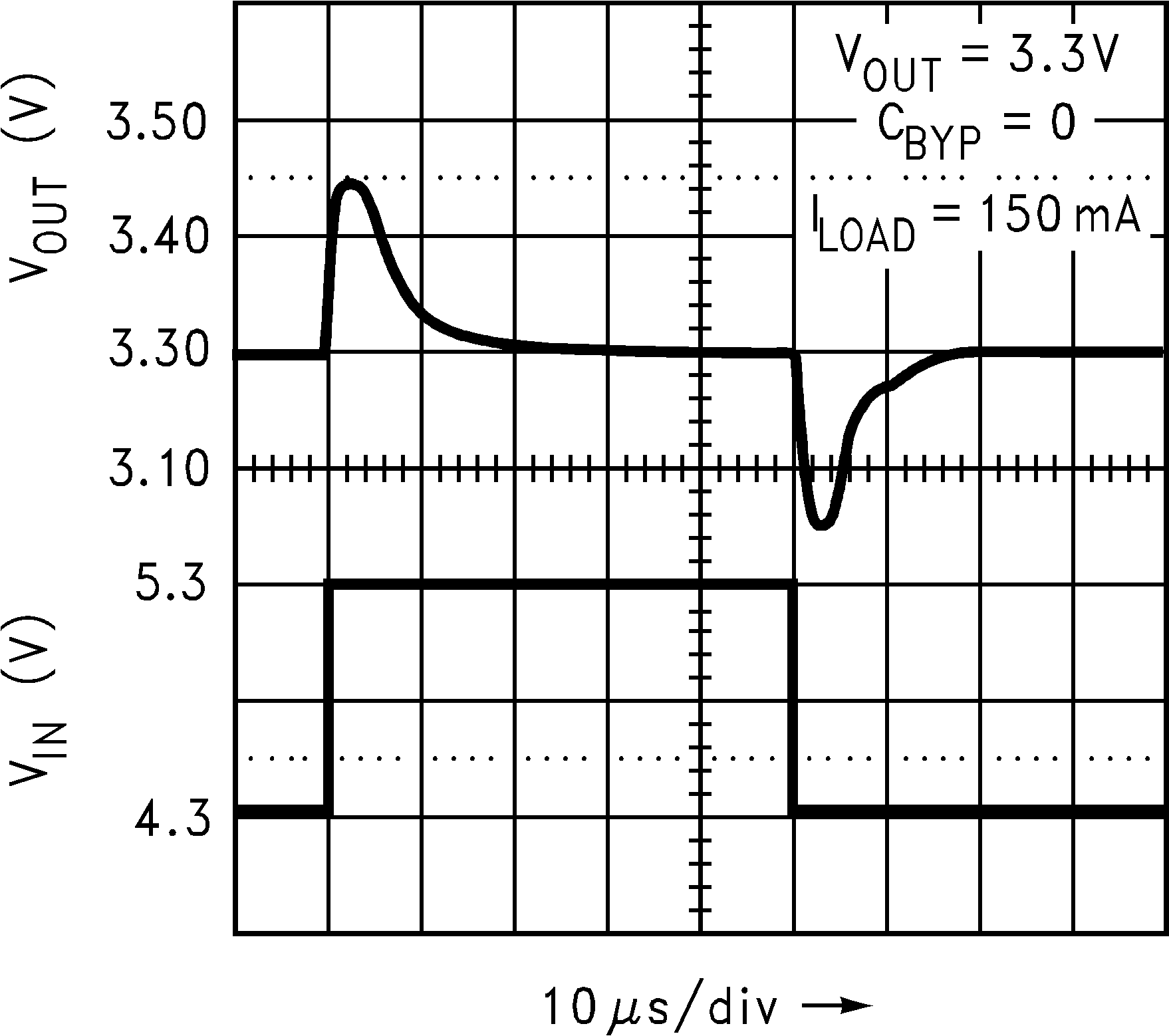
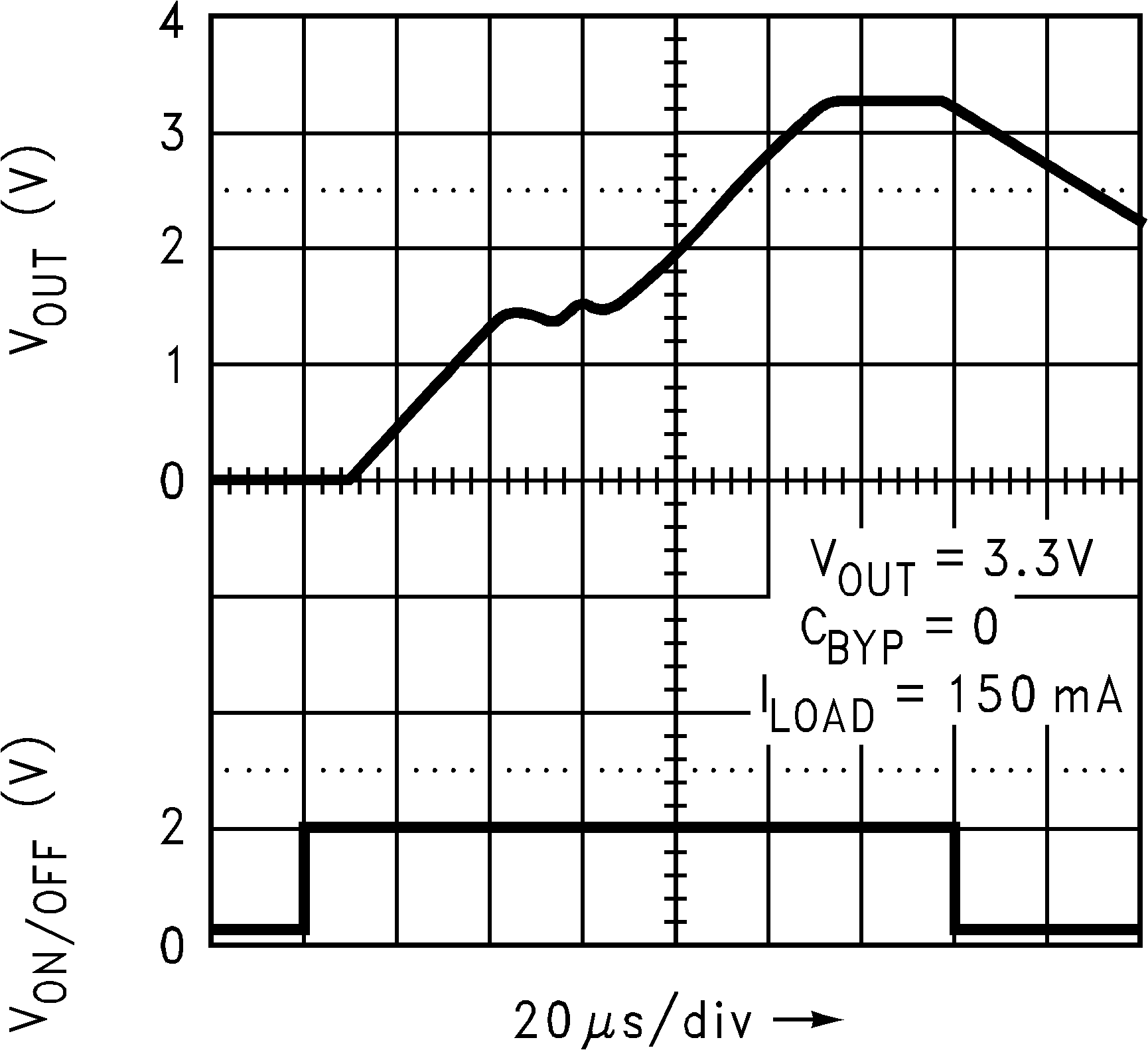
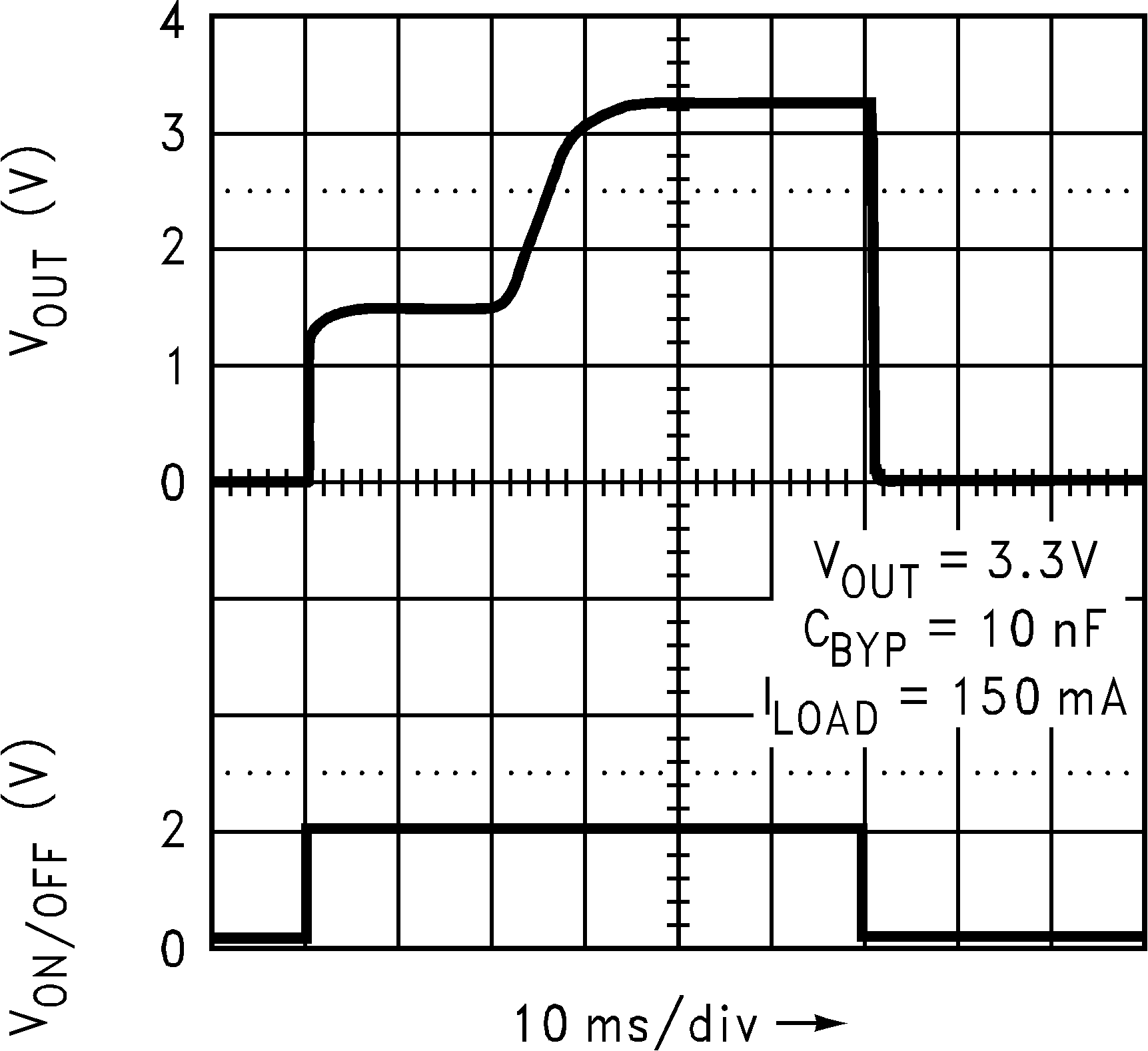

| dI/dt = 1 A/μ |

| dI/dt = 1 A/μ |

| VOUT = 3.3 V, CBYP = 0 nF,
ΔVIN = 1 V, IOUT = 1 mA, dV/dt = 1 V/μ |

| VOUT = 3.3 V, CBYP = 0 nF,
ΔVIN = 1 V, IOUT = 150 mA, dV/dt = 1 V/μ |


| COUT = 4.7 μF |